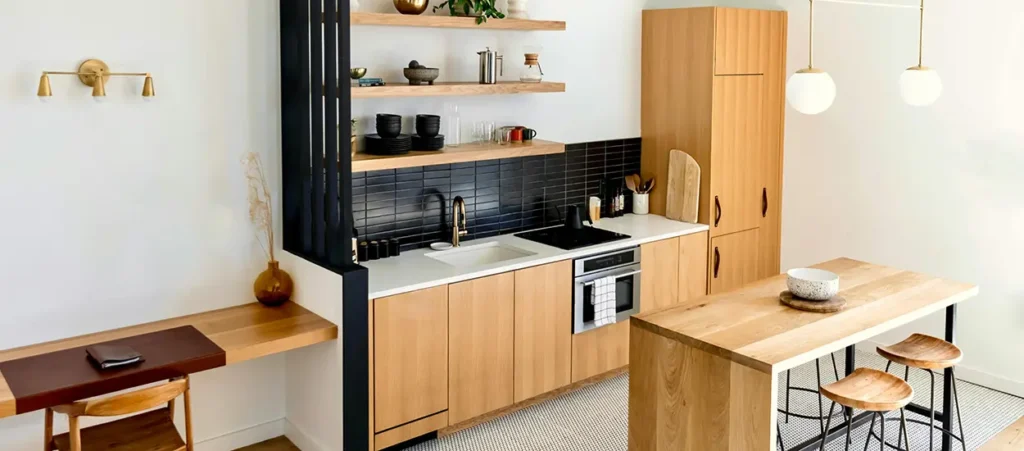Plywood is a versatile and budget-friendly material often used in furniture and construction, but can it work for countertops? While not as common as granite or quartz, plywood countertops offer a unique, modern look for kitchens and workshops. In this guide, we’ll explore the advantages, drawbacks, and best practices for using plywood as a countertop surface, along with alternative solutions if plywood isn’t the right fit.

1. Pros of Using Plywood for Countertops
A. Cost-Effective Alternative
Plywood is significantly cheaper than stone, solid wood, or laminate countertops.
Ideal for budget-friendly kitchen remodels or temporary setups.
B. Customizable & Easy to Work With
Can be cut into any shape or size for unique designs (e.g., waterfall edges, integrated sinks).
Accepts paint, stain, or epoxy finishes for a high-end look.
C. Lightweight Yet Sturdy
Unlike heavy stone, plywood is easier to install, especially in DIY projects.
Properly sealed, it can withstand daily use without warping.
D. Modern Aesthetic
When finished with a clear epoxy or stained, plywood can mimic industrial, rustic, or Scandinavian styles.
2. Cons of Using Plywood for Countertops
A. Requires Heavy Sealing
Unsealed plywood absorbs water, leading to swelling, mold, and stains.
Needs multiple coats of polyurethane, epoxy, or marine varnish for protection.
B. Not Heat-Resistant
Hot pans can scorch or delaminate the surface (always use trivets).
C. Susceptible to Scratches & Dents
Softer than stone or hardwood; knives and heavy objects can leave marks.
D. Limited Lifespan
Even with sealing, plywood countertops typically last 5–10 years, compared to decades for stone.
3. Best Practices for Plywood Countertops
A. Choose the Right Plywood
Baltic Birch or Marine Plywood: Highest quality, void-free layers.
Avoid CDX or construction-grade plywood (too rough for countertops).
B. Seal Properly
Sand smooth (up to 220 grit).
Apply 2–3 coats of epoxy resin or waterproof polyurethane.
Seal edges thoroughly (most vulnerable to moisture).
C. Add Protective Features
Use butcher block oil for food-safe surfaces.
Install metal edge banding for extra durability.
D. Consider Hybrid Designs
Pair plywood with a tile or stone inset for high-traffic areas (e.g., near the sink).
Alternatives to Plywood Countertops
Material Pros: Cons:
Butcher Block
Pros: Warm, repairable, food-safe
Cons:Requires regular oiling
Laminate
Pros: Affordable, many colors
Cons:Prone to chipping
Quartz
Pros: Durable, low-maintenance
Cons:Expensive
Final Verdict: Is Plywood Right for You?
Yes if: You want a budget-friendly, customizable, and stylish countertop for light use.
No if: You need a heat-proof, scratch-resistant, or long-term solution.
For DIYers: Try a small plywood countertop in a laundry room or bar area before committing to a full kitchen install.

